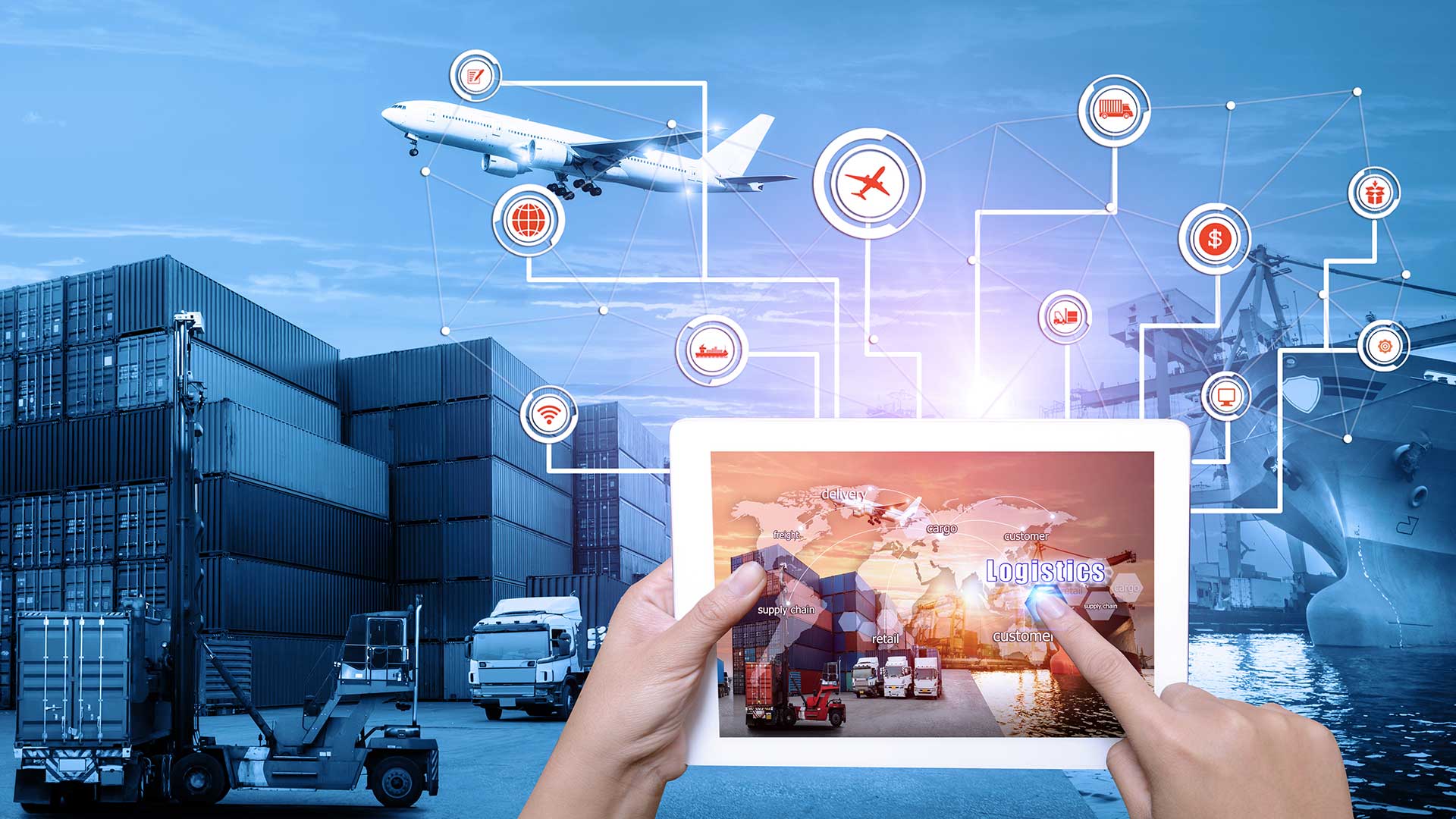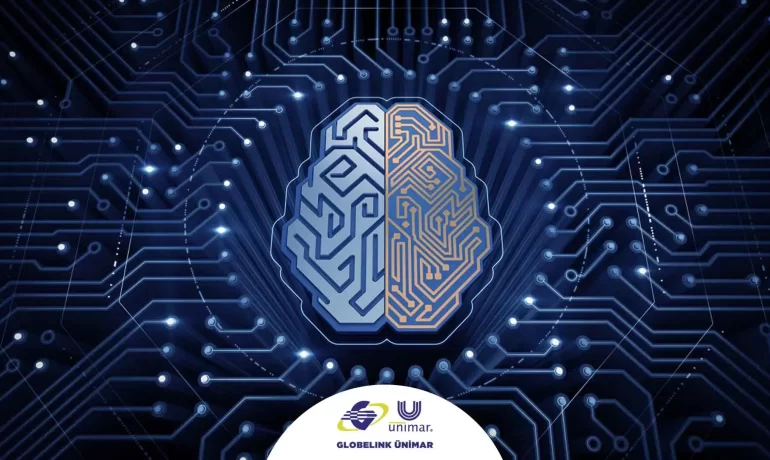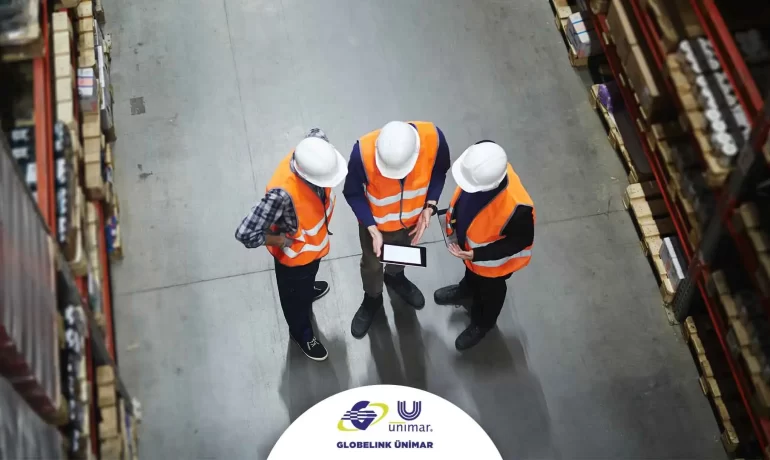
- May 3, 2022
- Blog
Rapidly developing information technologies and digitalization bring about groundbreaking changes in the logistics industries as well as in all other industries. Logistics 5.0, which is the response of the logistics industry to the industry 5.0 society model, is one of the most important agenda items that the industry is talking about today.
The basis of this development of the logistics industry, which is one of the three fastest changing and developing industries of the last 50 years, lies in the necessity of being in close relationship with almost all industries that produce products and services and being able to adapt immediately to possible changes in the industry. While the types of services demanded from the industry are changing day by day, they also diversify with the digitalization of industrial processes. Nowadays, when the integration of Industry 5.0 technologies into the logistics industry is on the agenda, the industry is on the verge of a change like never before.
Looking at the historical industrial evolutions in the logistics industry from past to present, logistics 1.0 brought with it the innovation of “mechanization of transportation” upon the invention of water and steam-powered machines. With Logistics 2.0, the time and staff involved in loading and unloading operations were significantly reduced by using the “mechanization of cargo handling”. In the era of Logistics 3.0, which started with the use of Warehouse and Transport Management System applications, customs systems such as DAKOSY, NACCS, ITDS were developed.
We have passed the eras of logistics 1.0, logistics 2.0 and logistics 3.0. With the era of Logistics 4.0, which the industry has just started to adapt to and will move to the next stage shortly, logistics operations have been moved to another dimension with tools such as the Internet of Things, machine learning and artificial intelligence. Logistics 5.0, which will come to life with the effective use of Industry 5.0 technologies and will cause radical changes in the logistics industry shortly, will restructure all processes from raw material procurement to consumer delivery by integrating digital innovations such as the Internet of Things (IoT), AI, big data and robotics brought by 4.0 into the logistics value stream.
With Logistics 5.0, logistics companies will now offer “Customized Logistics Solutions” consisting of different scenarios for each customer with different demands.
The Pandemic Promotes Industrial Change
The major problems that emerged in the supply chain on a global scale facilitated the evolution of the logistics industry, which is in search of a technological transition, to Logistics 4.0, especially during the pandemic and afterwards, they also opened the door to a formation that supports sustainability such as Logistics 5.0.
Problems such as the shortage of containers, the renewal of teams, new security measures and delays during the COVID-19 epidemic revealed the weakness of some processes in the logistics industry. All this accelerated the transition to Logistics 5.0.
At this point, companies have to invest in technology and innovation in order to increase their competitiveness and to create stronger data-based knowledge in order to exist in the future. In this sense, the European Union is determined to transform its production system around two focuses: digitalization and sustainability. Logistics 5.0 is at the center of these two focuses.
Logistics is Being Reshaped
Industry 5.0 is getting prepared to build an intelligent society model in which people’s relationship with machines and robots is ensured in the most efficient way.
Logistics 5.0, which is the equivalent of the effective use of society-oriented unmanned technologies brought by Industry 5.0 in the logistics industry, aims to obtain maximum benefit from both machines and people in the supply chain. Logistics 4.0 promised to produce knowledge and intelligence by humans with the help of technology. Logistics 5.0, on the other hand, promises to produce information and intelligence through artificial intelligence and put it at the service of people.
With Logistics 5.0, which offers a collaborative working system between humans and robots, creating an unmanned supply chain, reducing supply chain risk and waste based on instantaneous up-to-date data, developing supply chain integration for more strategic partnerships, automating third-party logistics (3PL) operations and interconnecting them like never before will be possible. With this new way of doing business, it is planned to maximize efficiency by enabling robots to perform tasks that are difficult, time-consuming and dangerous to be performed by humans.
Allowing the creation of an effective synergetic environment between humans and machines by embedding the Internet of Things, artificial intelligence and big data analytics Technologies into business processes, this system also envisions providing more flexibility in terms of “customizing” the products demanded by customers. The use of high-tech products brought by Industry 5.0 will soon provide a very high capacity to offer customized products.
Thus, it will be able to create mass customizations in supply chain production systems. As demanding customized service may seem to require human intervention, these interventions will require more brainpower than muscle power. However, interventions to “intelligent” systems also require being “intelligent”.
Thanks to the smart warehouses and transportation provided by Logistics 5.0, the answers to questions such as where the products are, how they are produced, where they come from and where they are going will now be answered instantly. It is aimed to increase productivity with increasing visibility in internal operations and end-to-end enhancements from supplier to customer.
With Logistics 5.0, all the stages from production to consumption in the supply chain and everything including the recycling of consumption wastes will be automated. In this world where needs will be met without demand, purchasing, transportation, storage, production and distribution will turn into a self-running mechanism.
With the activation of the Internet of Things system, processes such as supply chain, vehicle management, fuel consumption and resource use will be monitored in real time. Driverless vehicles stand out as one of the most important developments of the era of Logistics 5.0.
The New Era Will be The Era of Logistics 5.0
Digital transformation will be indispensable in the era of Logistics 5.0. This transformation is inevitable for suppliers, manufacturers, logisticians, vendors, distributors and even consumers. Many companies are preparing for the new era by completing their software needs within this framework. The new era will be the era of Logistics 5.0. For this reason, companies need to get prepared for an era in which they will operate very differently from today. Whether or not companies implement Logistics 5.0 will largely depend on how open they are to innovation.
Since the cost of technology is much lower than before, it is possible for small and medium-sized companies to use many technologies such as the cloud effectively. Such investments in the future will save them from investing in data centers and constructing hardware.
Ayfer Saltan Oladi: Logistics 5.0 Will Change the Ways of Doing Business
During the pandemic, the problems that occurred in the supply chain and the needs that developed along with it accelerated the spread of Logistics 4.0 technologies. In this era, the use of big data technology in the logistics industry started to become widespread and it was seen that the coordination of the entire supply chain could be achieved with cloud applications. However, today, we can predict that Logistics 5.0 applications will become widespread in the World shortly at an unexpected pace. Within this context, many companies are trying to fulfill their software needs and are preparing for the new era with digital transformation projects.
Logistics 5.0 comes with many innovations that we know and don’t know yet that will completely change the way we do business. We need to prepare well for this era in which we will work in a very different way from today. We are talking about a system where everything is automated and many stages from purchasing to distribution will take place on their own. With this change, there will be a working order based on the ability of employees to work integrated with machines. Artificial intelligence will be the new foundation of logistics. We know that one of the biggest problems of companies that will implement this system, where production processes develop faster and where there is a continuous renewal, is the shortage of trained personnel. It is important for companies to fill the knowledge gaps regarding the use of future new technologies as soon as possible. It is necessary to train qualified personnel who are familiar with 5.0 technologies without wasting time.
Companies that cannot adapt to this change will be doomed to disappear. Businesses that cannot integrate technology into their businesses will not be able to compete. It is necessary to complete the digital transformation quickly in the logistics and supply chain industry. When we evaluate it in terms of the industry, I think that we are technically sufficient for this. This integration process depends on the use of all kinds of software we use in the supply chain within the framework of a digital transformation.
Artificial Intelligence is Both Changing and Transforming
Today, we can see the clues that we will
The Future of the Cargo Market is Shaped by e-commerce
The e-commerce industry has been growing rapidly since the



